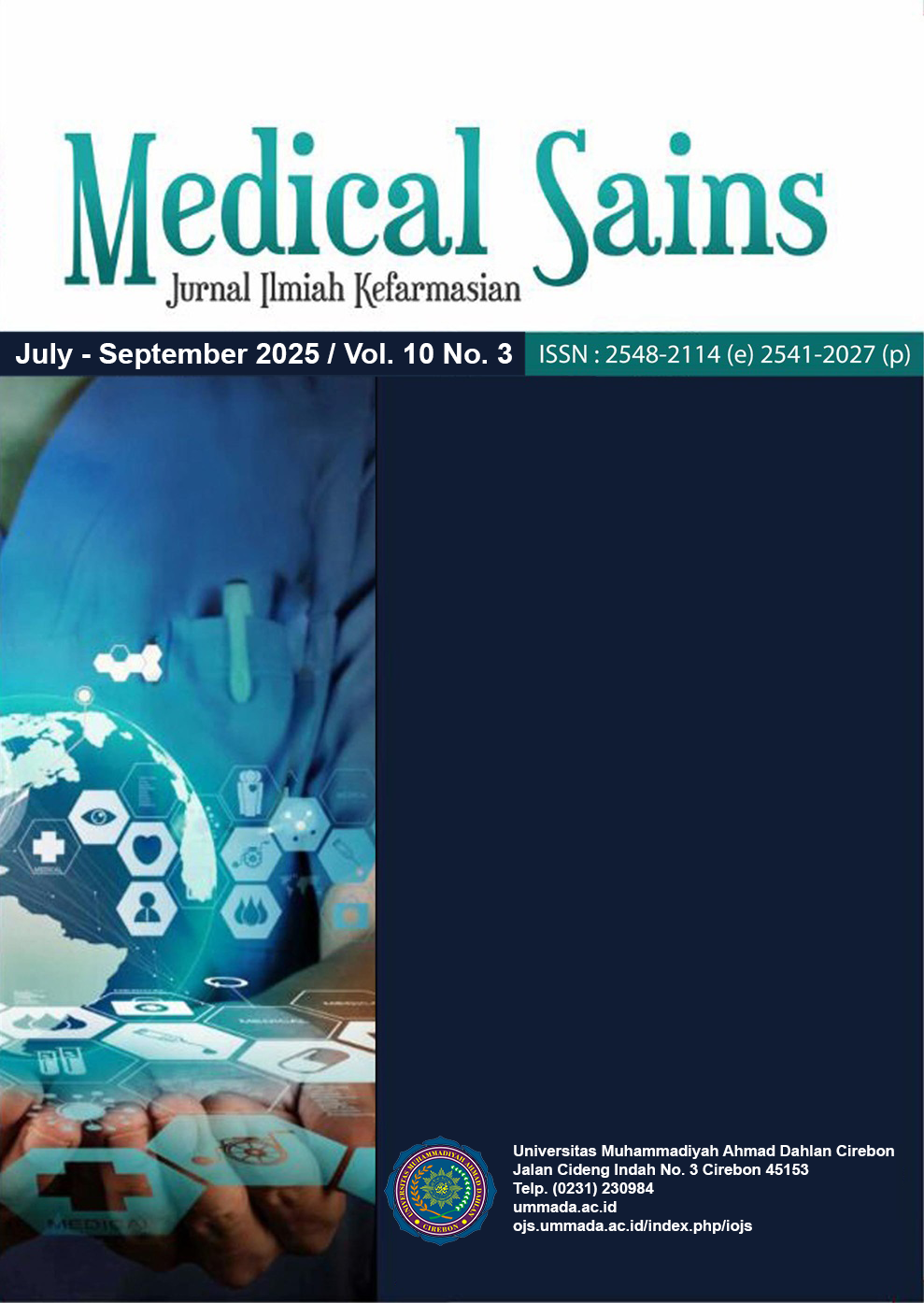PHYTOCHEMICAL PROFILING OF PURNAJIWA FRUIT (Kopsia arborea Blume.) EXTRACTS AND ANTIBACTERIAL ACTIVITY AGAINST METHICILLIN-RESISTANT Staphylococcus aureus (MRSA)
Main Article Content
Abstract
Purnajiwa (Kopsia arborea Blume.) contains diverse phytochemicals with notable antibacterial potential. This study aimed to characterize and quantify the phytochemicals of Kopsia arborea fruit extracts obtained by maceration and Soxhlet extraction with methanol and evaluate their antibacterial activity against MRSA through phytochemical screening, GC-MS analysis, spectrophotometric quantification of flavonoids, alkaloids, and phenolics, and disc diffusion assay at 100 ?g/mL concentration. The findings indicated that the Soxhlet extraction produced a superior yield (19.47 ± 0.58%) compared to maceration (11.09 ± 0.65%). Phytochemical analysis revealed the presence of alkaloids, flavonoids, phenolics, tannins, saponins, and triterpenoids, with no qualitative differences between the two extracts. Quantitative analysis demonstrated higher concentrations of alkaloids, flavonoids, and phenolics in the Soxhlet extract, with values of 88.58 ± 3.76, 46.50 ± 1.04, and 57.87 ± 0.44 ?g/mL, respectively, compared to the maceration extract (50.46 ± 3.86, 26.22 ± 0.27, and 30.49 ± 0.31 ?g/mL, respectively). GC-MS analysis identified 13 alkaloid compounds in the Soxhlet extract and 12 in the maceration extract. Antibacterial assays revealed that the mean inhibition zone diameter against MRSA was 11.69 ± 0.28 mm for the Soxhlet extract and 12.61 ± 0.27 mm for the maceration extract, respectively. In conclusion, Soxhlet extraction yielded higher concentrations of alkaloids, phenolic compounds, and flavonoids; however, GC-MS analysis revealed that the macerated extract exhibited a higher AUC of alkaloid compounds than that of Soxhlet extraction. Moreover, the macerated extract demonstrated superior antibacterial activity, indicating that maceration has greater potential for development as an antibacterial agent than Soxhlet extraction.
Article Details

This work is licensed under a Creative Commons Attribution-ShareAlike 4.0 International License.
